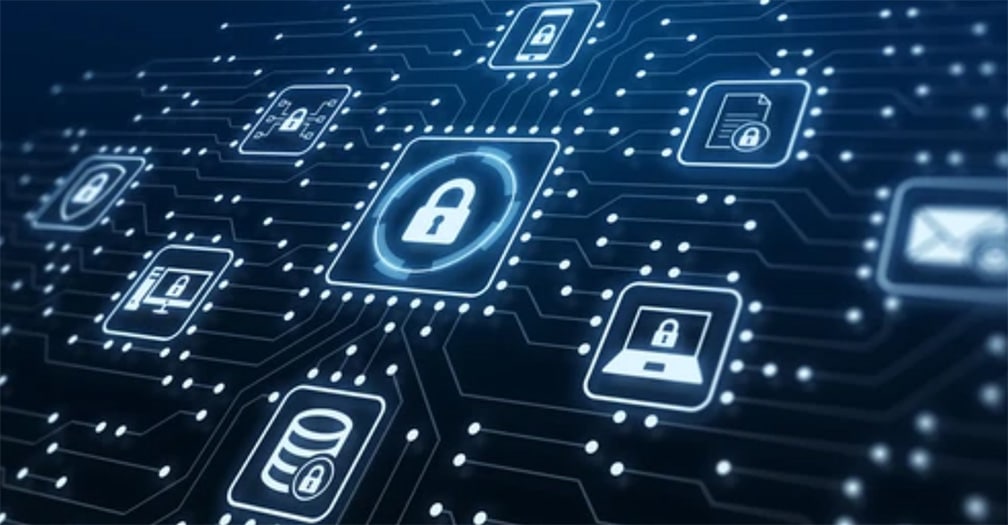Cybersecurity plays an important role in an organization’s ability to run effectively and to safeguard critical information assets. As digital technology becomes more and more complex and advanced, the opportunity for malicious activity to exploit vulnerabilities intensifies. Organizations must determine what digital assets need protecting. The most effective cybersecurity designs are multi-layered in which some countermeasures will overlap, while others may offer a unique function. Ultimately, the goal of all cybersecurity tools is the same—maintain the integrity of the network and information while keeping unauthorized users at bay. The following are five important cybersecurity types to consider.
Network Security
Network security utilizes several different technologies and processes to protect the integrity and accessibility of computer networks. With cyber threats on the rise, all organizations need some form of network security. Traditionally, network security entails a set of rules and configurations for deploying hardware and software applications to safeguard the network and its data. As network architectures continue to evolve into more complex systems, there can be more ways for them to be exploited by cyber threats. Even a few minutes of downtime can leave network security vulnerable to attacks. Here are some of the countermeasures utilized by network security to combat these potential threats:
- Firewall: As a first line of defense, firewalls are a barrier and can be either hardware, software, or both. Like a bouncer at a club, it monitors incoming traffic and decides which elements can gain access and which should be denied based on pre-programmed security rules.
- Access control: An organization’s systems and protocols are established to ensure that only authorized users can access the network and the data therein. Identity and access management (IAM) is the tool most commonly used for access control.
- Network Segmentation: This defense measure organizes an enterprise’s data by categorizing it into separate groups based on common functions. It’s like putting your most cherished belongings into separate rooms in a house with different locks. Only certain personnel are granted access to these particular areas.
Application Security
Application security’s main objective is to protect software application code and data from being accessed, modified, or even deleted. Whether an application is already deployed or is in the development or design phase, establishing security measures to safeguard them is paramount. Exploiting vulnerabilities is how hackers get the keys to the castle. Along with firewalls, other countermeasures include:
- Encryption: Data is scrambled so that only authorized users can decrypt it, making it more difficult for hackers to exploit the information.
- Antivirus programs: This type of software scans files, web pages, and emails for any kind of malicious activity and then works to block it.
- Managed Endpoint Detection and Response: This is a fully monitored software platform backed by human responders to both proactively stop intrusion attempts and reactively remediate anything that an end-user may unknowingly allow onto the network.
Cloud Security
Unlike on-premises infrastructures, cloud platforms are spread out among several servers in data centers worldwide. Cloud security aims to safeguard the systems and data hosted on the cloud by ensuring data privacy and compliance with stored data. Its primary goal is to make sure that only authorized users can access data stored in the cloud. Providers of cloud services utilize a wide range of tools and practices including:
- Micro-segmentation: Like network segmentation, this technique divides data into similar functions; however, micro-segmentation goes further by dividing it into even smaller compartments. In many cases, it may be separated by one individual’s workload.
- Next-generation firewalls: These innovative firewalls have a more discerning eye than traditional firewalls, allowing them to combat advanced threats using application-aware filtering.
- Data encryption: Users can encrypt data and create a key before transferring it to the cloud. Known as end-to-end encryption (E2EE), data is safe during transfer, storage, and access. Not even the data provider can access the data.
Infrastructure Security
Infrastructure security protects all critical infrastructure elements, such as servers, network communications, and data centers. The chief aim of infrastructure security is to minimize vulnerabilities from sabotage, corruption, and even terrorism. Other critical infrastructure components to safeguard include power supplies, cooling systems, and water supplies. Several preventative countermeasures are deployed with so many vital areas at potential risk. Besides firewalls, access control, and application security, infrastructure security utilizes several security tools, including:
- Virtual private networks: This network has an encrypted internet connection to protect data from being intercepted by unauthorized users.
- Behavioral Analytics: This technique allows organizations to use complex algorithms to analyze unexpected behavior that could be a potential security threat.
- Intrusion Prevention Systems (IPS): This security tool monitors a network regularly for any threat and then reports or blocks it. IPS also resets firewalls and resets connections.
End-User Security
As the adage goes, a chain is only as strong as its weakest link. All end-users, from the CEO to the person at the front desk, use the applications and systems. As the first line of defense, end-users play a vital role in safeguarding an organization’s network and data. The best way to bolster this defense is by educating end-users on security best practices to minimize the threat of malicious activity. Some common errors that end-users make include:
- Creating weak passwords for logins
- Opening unsolicited email attachments without assessing the source
- Installing applications without checking if it’s free of viruses
With over forty-two years of experience, Cynergy Technology offers several network security services to help you secure valuable data and safeguard your system from cyberattacks.
From network operations to security engineering to penetration testing and more, Cynergy Technology is here to support your organization so that it can get back to doing what it does best. To learn more about how Cynergy Technology can help protect your reputation and keep your IT system running smoothly, contact us for a free consultation today.







